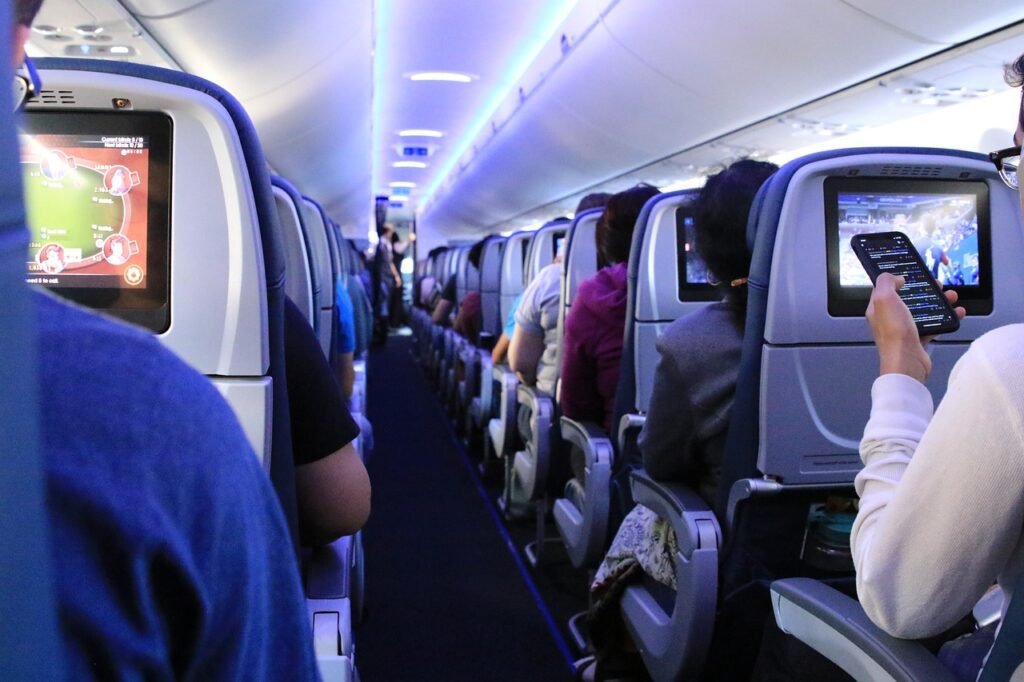Traveling abroad with kids for the first time is an exciting, but also a little nerve-wracking, adventure. As a parent, you’ve likely gotten used to traveling for weekend getaways, family vacations, or road trips, but the idea of taking your kids overseas can feel like you’re entering uncharted territory.
The good news? With a bit of preparation and some practical tips, you can make your first international family trip a smooth, enjoyable, and memorable experience. From packing efficiently to keeping kids entertained on long flights, we’ll cover everything you need to know to feel confident about your first trip abroad with your little ones.
1. Choose a Kid-Friendly Destination
The first step in planning your trip is choosing a destination that will be enjoyable for both you and your kids. While exotic locations might sound appealing, your choice of destination will set the tone for the entire trip, so it’s important to pick somewhere that’s family-friendly and not too overwhelming for first-time international travelers, especially with kids in tow.
Things to Consider When Choosing a Destination
Travel Time: How long will it take to get there? Long flights with young kids can be tough, so for your first international trip, consider destinations that are closer to home or have manageable flight times.
Climate and Weather: Kids tend to be more sensitive to extreme weather, so consider destinations with moderate climates. A place that’s too hot or too cold might make for a challenging trip.
Health and Safety: Research the safety and health requirements of your destination. Make sure there are reliable healthcare facilities in case of emergencies, and check if any vaccines are required.
Activities for Kids: Look for destinations that offer family-friendly activities. Parks, museums, beaches, and interactive attractions will keep your kids entertained and make the trip more enjoyable for everyone.
Pro Tip: Involve Your Kids in the Planning
If your kids are old enough, involve them in the planning process. Let them help pick out activities or sights they’d like to see. Not only does this make them more excited for the trip, but it also helps them feel more engaged and invested in the experience.
2. Get Passports and Visas in Order

One of the most important aspects of traveling abroad is making sure everyone in your family has a valid passport. If this is your first time traveling internationally with your kids, you’ll need to apply for passports for them well in advance of your trip.
Applying for Your Kids’ Passports
Application Process: For children under 16, both parents or guardians must be present when applying for a passport (if one parent cannot be present, the present parent must provide legal documents like a notarized consent form or proof of sole custody). You’ll need to bring a completed passport application (Form DS-11), proof of your child’s citizenship (like a birth certificate), and passport photos.
Passport Photos: Make sure to get proper passport-sized photos of your kids. Many passport photo services are familiar with the specific requirements for kids’ photos, so it’s a good idea to go to a professional rather than trying to do it yourself.
Timing: Passport processing times can vary, but it’s recommended to apply at least six months before your trip to avoid any last-minute stress.
Visa Requirements
Depending on where you’re traveling, you may also need to apply for visas for both you and your kids. Check the specific visa requirements of your destination country well in advance, as processing times can vary.
Pro Tip: Make Digital Copies
Before you leave, make digital copies of everyone’s passports and store them in a secure cloud service (or email them to yourself). This will make it easier to replace lost or stolen passports while you’re abroad.
3. Pack Smart and Light
Packing for a trip with kids is a balancing act between bringing enough to keep everyone comfortable and entertained, while also avoiding overpacking. While it can be tempting to bring everything “just in case,” overpacking can lead to heavy bags and unnecessary stress during the trip. The goal is to pack efficiently so you have everything you need without feeling bogged down by too much stuff.
Packing Essentials
Clothing: Plan outfits that are versatile and can be mixed and matched. For kids, bring clothes that are comfortable and suitable for various activities. It’s a good idea to pack layers, as weather can be unpredictable. Don’t forget swimsuits, even if you’re not headed to the beach—many hotels have pools that your kids will love.
Comfort Items: If your child has a favorite blanket, stuffed animal, or bedtime story, bring it along. These comfort items can help them feel more at home while traveling.
First Aid Kit: Pack a small first aid kit with essentials like band-aids, antiseptic wipes, children’s pain reliever, motion sickness medication, and any necessary prescription medications.
Entertainment: Long flights, layovers, and train rides can get boring for kids, so pack some entertainment options. Bring books, coloring supplies, small toys, and pre-download movies or games onto a tablet or smartphone.
Snacks: Always have snacks on hand. Bring a variety of non-perishable snacks like crackers, granola bars, fruit pouches, and small packs of nuts or trail mix.
Pro Tip: Roll, Don’t Fold
When packing clothes, rolling them instead of folding helps save space and reduces wrinkles. You can also use packing cubes to keep things organized, especially when packing for multiple kids.
4. Prepare for the Long Flight

One of the biggest challenges of traveling internationally with kids is managing long flights. If your kids are used to shorter domestic flights, the idea of a 10+ hour flight can feel daunting. But with the right preparation, you can make the flight experience easier for everyone.
Booking Your Flight
Time Your Flight Right: If possible, try to book flights that coincide with your kids’ nap times or bedtime. A night flight can increase the chances of them sleeping through a portion of the trip.
Seat Selection: For families, sitting together is crucial. Most airlines allow you to select your seats when booking, so try to get seats in the same row. If you’re traveling with a baby or toddler, request a bulkhead seat, which often has extra legroom and space for a bassinet.
Pre-Boarding: Airlines usually allow families with young children to board early. Take advantage of this to get settled before the plane fills up, but don’t board too early if you think your kids will get restless waiting on the plane.
In-Flight Entertainment and Comfort
Headphones and Devices: Bring child-sized headphones and pre-load your tablet or phone with movies, shows, and games. Many airlines offer in-flight entertainment, but it’s a good idea to have backups in case the system malfunctions or doesn’t offer kid-friendly options.
Comfortable Clothes: Dress your kids in comfortable, loose-fitting clothes for the flight. Airplanes can get chilly, so bring layers like hoodies or blankets.
Movement Breaks: Encourage your kids to move around during the flight, especially on longer flights. Walking up and down the aisle can help stretch their legs and break up the monotony of sitting for long periods.
Pro Tip: Stay Calm and Flexible
Kids can be unpredictable, especially during travel. Stay calm and go with the flow. If your child gets upset or fussy, don’t stress about what other passengers might think—most people are understanding, especially if you’re making an effort to calm your child.
5. Arriving at Your Destination: What to Expect
After surviving the flight, you’ll arrive at your destination—and this is where the real adventure begins! However, there are still a few things to keep in mind to ensure that the rest of your trip goes smoothly.
Adjusting to a New Time Zone
If you’re traveling across multiple time zones, your kids (and you!) may experience jet lag. Kids tend to adjust faster than adults, but it’s still a good idea to help them ease into the new schedule.
Gradual Adjustment: If possible, try to adjust your kids’ schedule a few days before your trip by moving bedtime and wake-up times closer to the time zone of your destination.
Outdoor Time: Once you arrive, spend as much time outside as possible. Exposure to natural light helps reset your body’s internal clock and can ease the effects of jet lag.
Transportation and Getting Around
Car Seats and Strollers: If you’ll be renting a car at your destination, check with the rental agency to see if they provide car seats. If not, you may need to bring your own. For city exploring, a lightweight travel stroller is a lifesaver for getting around with young kids.
Public Transportation: Many international cities have excellent public transportation systems, and they’re often more convenient than renting a car. Trains, buses, and subways are generally stroller-friendly and allow you to avoid the hassle of parking.
Pro Tip: Set Realistic Expectations
Traveling with kids abroad will be a different experience than traveling solo or as a couple. Set realistic expectations for what you can accomplish each day. Don’t try to pack in too many activities, and always leave room for downtime, naps, or just relaxing.
6. Exploring and Enjoying the Trip

The most rewarding part of traveling abroad with your kids is seeing them experience new cultures, foods, and environments for the first time. It’s a magical experience, and there are a few tips to help make the most of it.
Plan Kid-Friendly Activities
Mix of Fun and Education: Look for activities that are both fun and educational. Visiting local parks, kid-friendly museums, and cultural sites can be both entertaining and enriching for your kids.
Leave Room for Spontaneity: While planning is important, don’t be afraid to leave room for spontaneous moments. Some of the best travel memories are made when you stumble upon something unexpected.
Dealing with Homesickness
It’s normal for kids (and even parents) to feel a bit homesick when traveling far from home. If your child starts feeling homesick, try to bring a piece of home with you—a favorite snack, toy, or even a FaceTime call with grandparents can do wonders.
Pro Tip: Embrace the Differences
One of the best parts of international travel is experiencing the differences in culture, language, and customs. Encourage your kids to try new foods, learn a few phrases in the local language, and embrace the adventure of being in a new place.
Final Thoughts: Making Your First Family Trip Abroad Memorable
Your first trip abroad with kids is sure to be an adventure filled with excitement, learning, and bonding. While there will inevitably be challenges along the way, the memories you make as a family will be worth it. With some careful planning, a lot of flexibility, and a sense of humor, your family’s first international trip will be a journey to remember for years to come.
Just remember, the key to success is preparation—and that includes preparing for the unexpected! Whether you’re exploring ancient ruins, eating gelato in a new country, or navigating a foreign subway system with a stroller in tow, enjoy every moment and embrace the joy of traveling as a family. Safe travels!
Explore more. Fear less.
- Why Road Trips are One of the Best Ways to Clear Your Mind - November 21, 2024
- 10 of the Best Pumpkin Patches in the U.S. - October 23, 2024
- 10 of the Most Colorful Fall Road Trips in the U.S. - October 22, 2024
